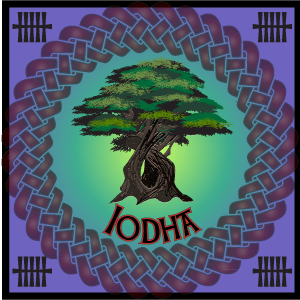One of the most ancient beings on Earth and associated with longevity and resurrection, it is said there is no reason in nature why a yew tree should die.
Back to trees
Back to Celtic mythology
Unusually, the ancient yew was respected by Druids and Christians alike. Yews can often be found in church yards but the trees often predate the building, living for around 2000 years, indicating that the Christians intended to build a place of worship and burial in the presence of a yew.
Moreover, some churches are surrounded by several yew trees which would once have been a sacred tree grove, a place of worship for the druids.
It is perhaps the longevity of the yew and its rather strange way of regenerating itself that made the tree sacred to both ways of life.
Immortal
The Druids believed in reincarnation whereas the Christians taught of the resurrection.
Yew trees were seen as being immortal, able to grow their branches down into the earth to form new trees which often twist together surrounding the original trunk.
As old branches die new life can form within them. A tree that looks old and withered is constantly renewing itself, or resurrecting itself. As a result, the trunks can grow to a massive diameter. The giant evergreen at the temple of Uppsala, sacred to the Vikings was thought to be a yew.
Guardian of the dead
The yew is also known as the guardian of the dead, possibly because of its position within grave yards. However, there are other ancient ideas that link the yew with death.
The tree is sacred to the Greek goddess Hecate, said to be the liberator of souls after death. Her yew tree is believed to root into the mouths of the dead in order to remove the soul.
Weaponry from the dawn of man
One of the oldest surviving man-made objects found in the northern hemisphere is a spearhead made of yew dating back at least 150 000 years (some say much older) to the dawn of man.
Yew was the wood of choice for longbows because of its strength and resistive qualities, the wood of the yew being the hardest around, so dense it sinks in water. Arrows used to be tipped with the toxic sap of the yew in order to poison the enemy.
In fact, just about every part of the yew tree is poisonous, even the wood dust, if accidentally inhaled, another reason why the yew may have gained its reputation as the death tree.
Accounts by the Romans recorded how Celtic tribes would kill themselves with yew poison rather than be defeated by the Roman armies.
Nothing grows beneath the yew due to its carpet of poisonous spines and the dark shadow of its dense canopy.
Treatment for cancer
Iodha, I – The yew tree represents the 20th letter of the ogham alphabet and is the tree of the winter solstice.
But amidst all this doom and gloom, people have recently attempted to take advantage of the yew tree’s toxicity in an attempt to fight cancer.
The chemical taxol, found in the bark of some yews was discovered to inhibit cell growth and division. It was therefore put to use in chemotherapy, halting the production of cancer cells.
However, so many trees are destroyed to produce just a small amount of the toxin that yew trees could be pushed to the brink of extinction and nobody is going to let that happen.
Treasured since the dawn of mankind, the yew continues to be an important and awe-inspiring tree. Trees are part of our culture and heritage, a living history, and the yew is the granddaddy of them all.
